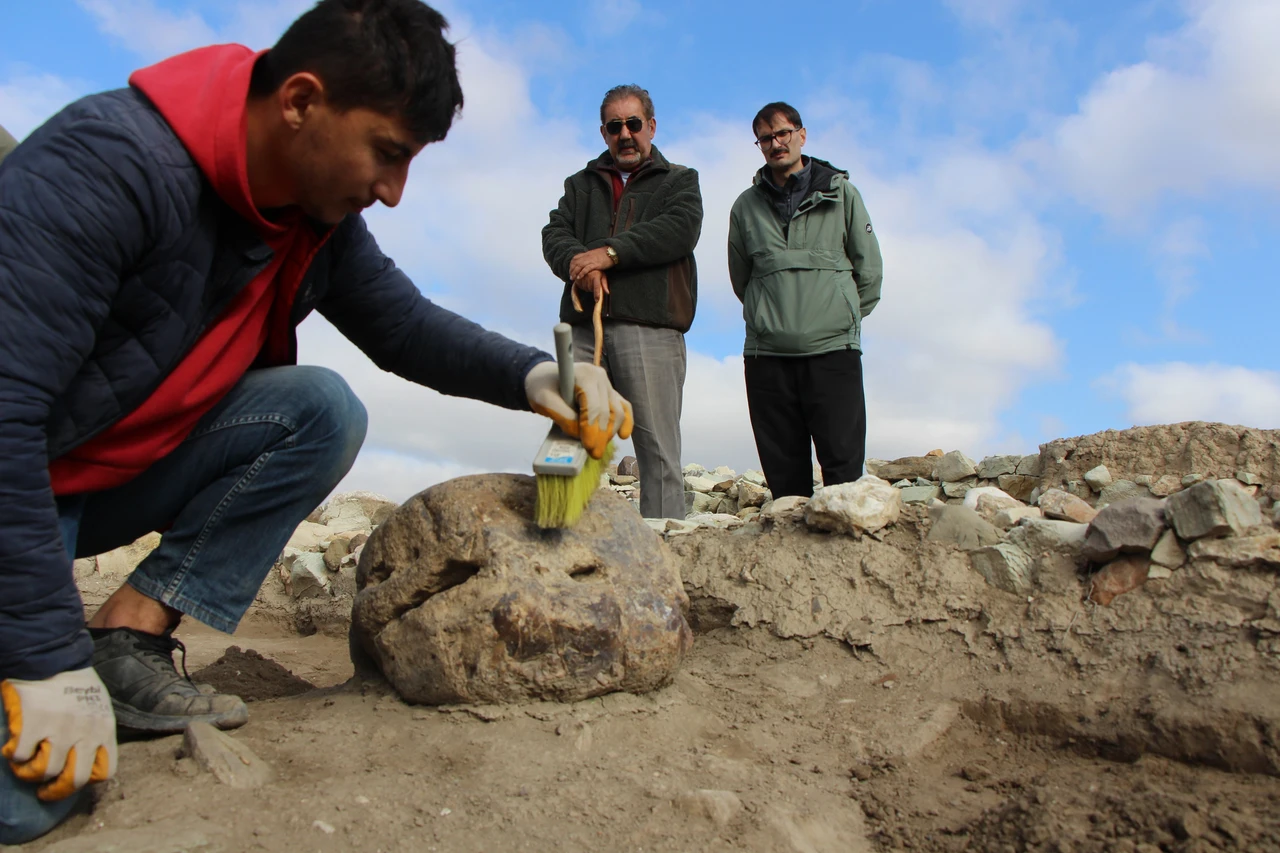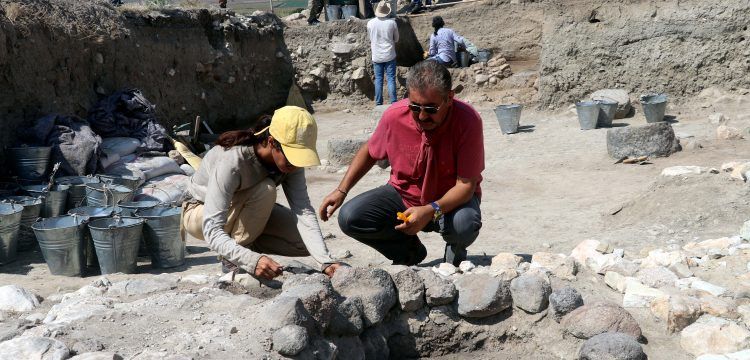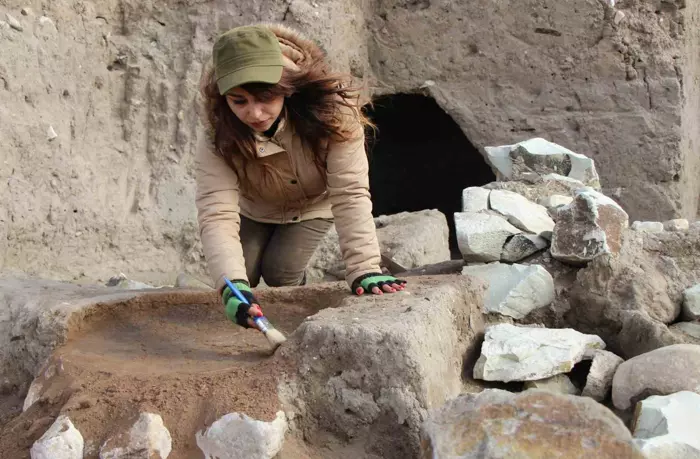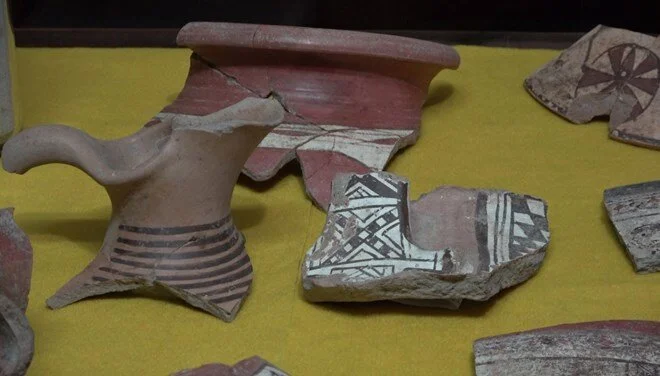
Scientists are investigating the mysterious stones used in the construction of the temples at Oluz Mound
Scientists are examining the light green mysterious stones that were predominantly used in the construction of the temples uncovered during the Amasya Oluz Mound excavations. Similar volcanic rock fragments, referred to as fine-grained tuff, were found at an ancient quarry located 10 kilometers away in the village of Doğantepe. Experts will collect samples from the

Archaeologists discovered a 2,600-year-old sacred chamber and a stone symbolizing the goddess Kubaba at Oluz Mound
Excavations at Oluz Mound, located in the Toklucak village of Amasya in northeastern Türkiye, have uncovered a sacred chamber and stone dating back to the Phrygian period, approximately 2,600 years ago. Prof. Şevket Dönmez, a faculty member of the Department of Archaeology at Istanbul University, stated that the discovery is a first in Anatolian archaeology.

Wooden-handled knives belonging to the Persians and Medes were found during excavations at Oluz Mound
Two knives with wooden handles, believed to belong to the Persians and Medes who ruled between 500-600 BC, were found during excavations at Oluz Mound in the Göynücek district of Amasya. During the excavations that have been going on for 18 years in Oluz Mound, the remains of the Persian monumental road, Persian type column

2600 year old Median period structures found in Oluz Mound excavations
During the ongoing excavations in Oluz Mound in Göynücek district of Amasya, 2600-year-old Median period structures were found. In the last excavation season, pottery and ceramics belonging to the Medes were unearthed, while this year’s excavations revealed an altar and architectural structures belonging to the Medes. The Medes are one of the ancient Iranian peoples

The 2600-Year-Old Altar Unearthed at Oluz Mound Will Shed Light on the History of Ancient Near Eastern Religion
The 2600-year-old Median period altar discovered in Oluz Höyük, which has a history of 6000 years, will shed light on the religious history and religious archeology of Asia Minor. Oluz Höyük is located 3 kilometers south of the Amasya-Çorum highway, about 2 kilometers northwest of Gözlek Village, and approximately 5 kilometers east of Toklucak (formerly

The largest Iron Age painted pottery collection of Anatolia was unearthed at Oluz Mound
In Oluz Mound where evidence of the belief in Zoroastrianism, the earliest example of monotheistic belief in the Ancient Near East, has been found, the largest collection of Iron Age painted and decorated pottery in Anatolia has been reached. Oluz Mound was discovered by Prof. Dr. Şevket Dönmez from Istanbul University between 1997 and 1999.
